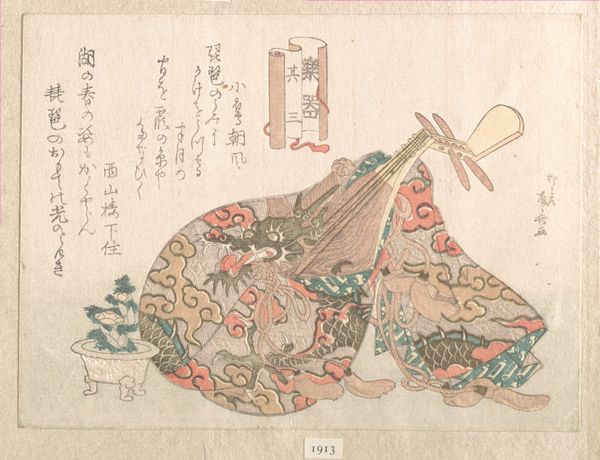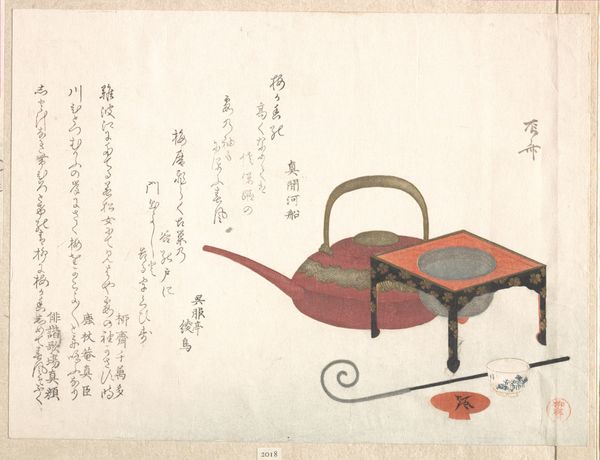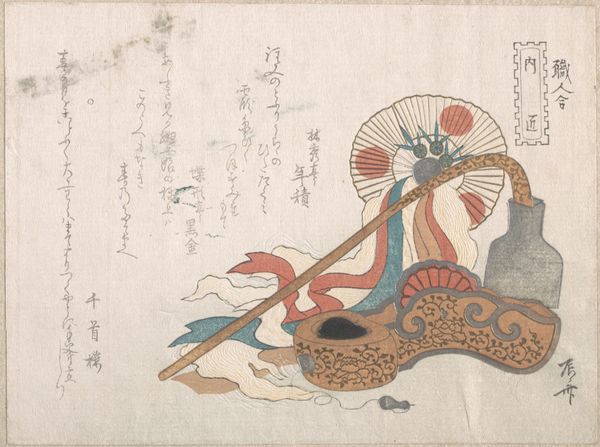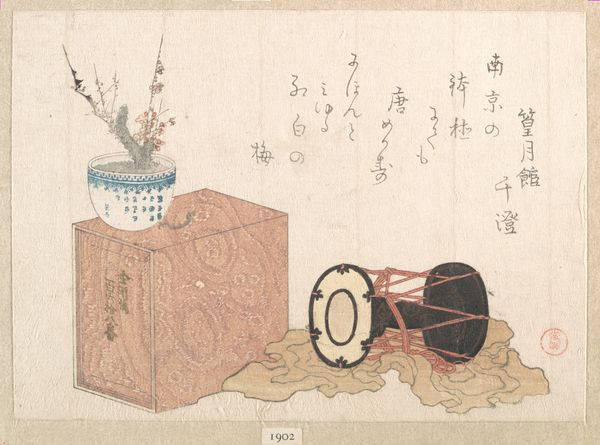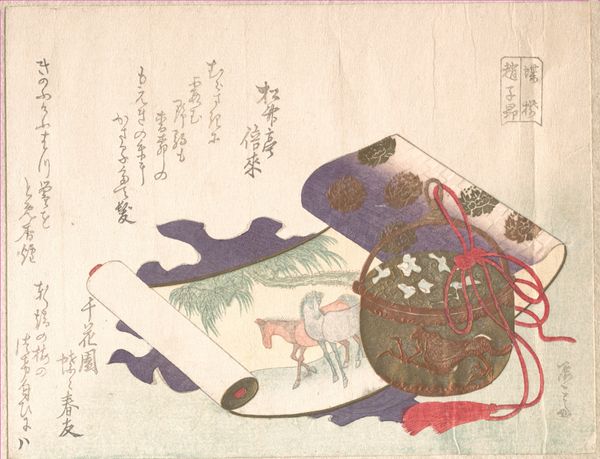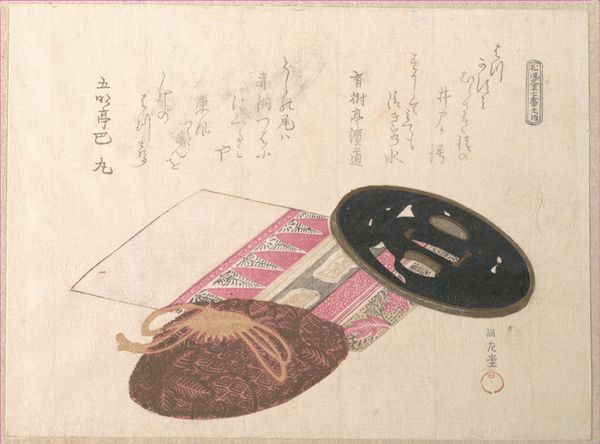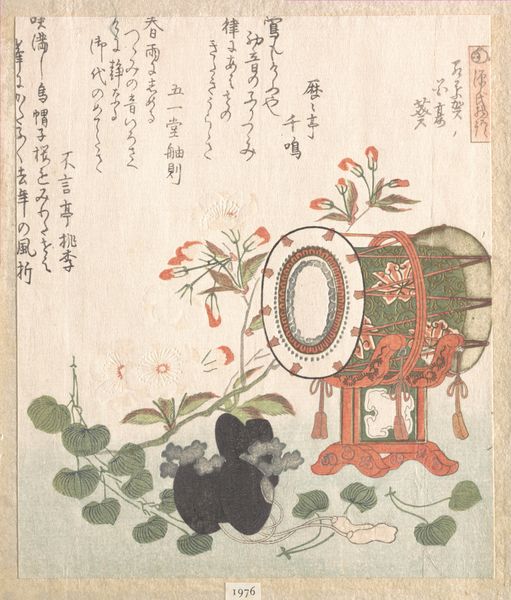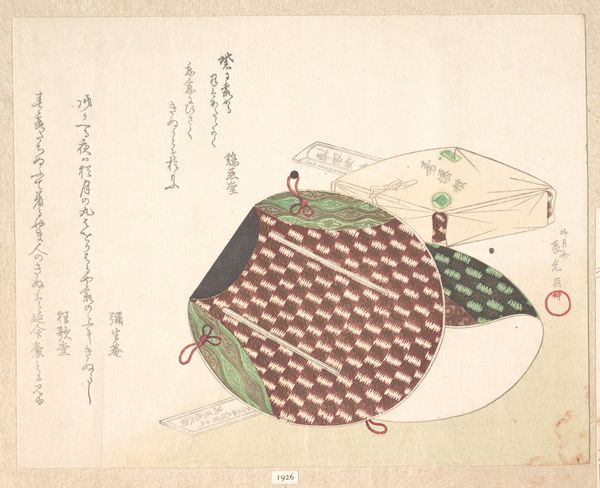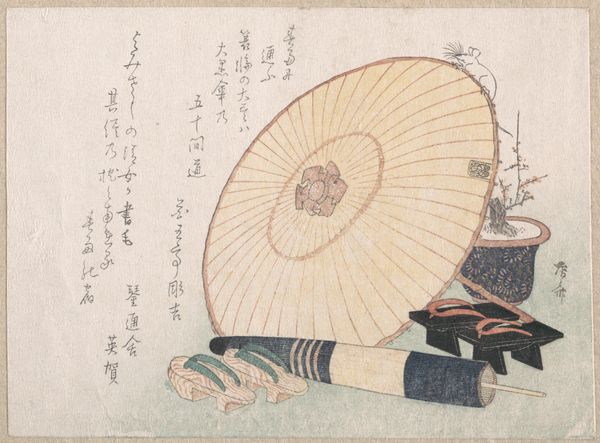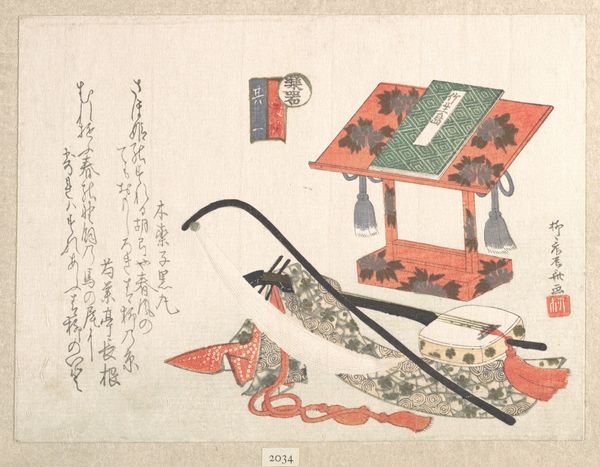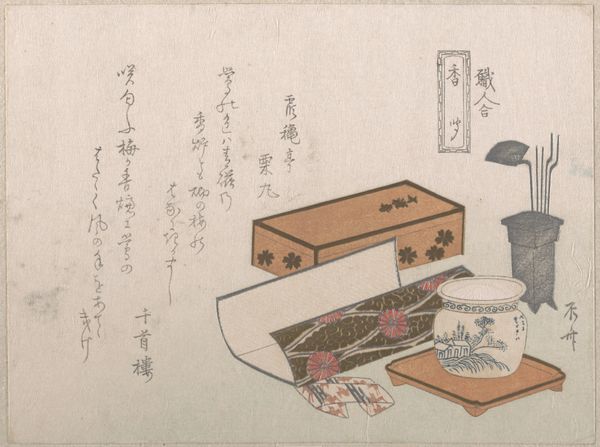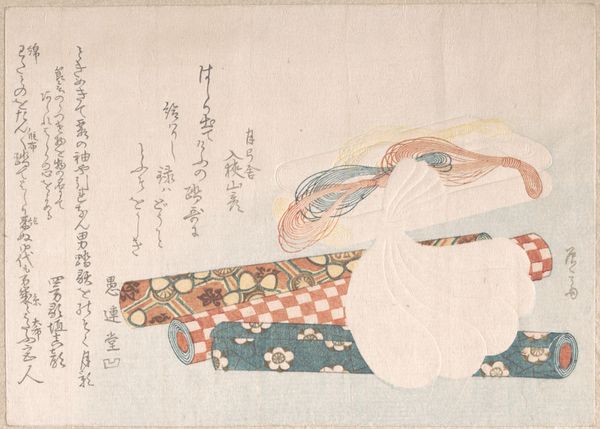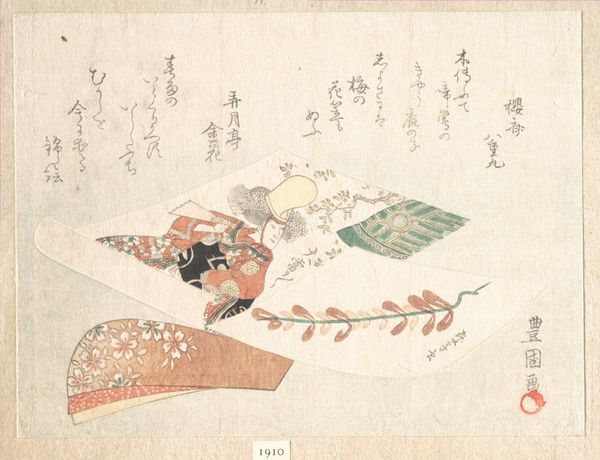
print, woodblock-print
# print
#
asian-art
#
ukiyo-e
#
woodblock-print
#
genre-painting
#
musical-instrument
Dimensions: 5 3/4 x 6 7/8 in. (14.6 x 17.5 cm)
Copyright: Public Domain
Curator: Looking at "Musical Instruments for the Noh Dance," a woodblock print crafted sometime between 1800 and 1823 by Ryūryūkyo Shinsai, currently housed in the Metropolitan Museum of Art, I'm immediately drawn to the ways the instruments hint at performative labor and cultural expression of that period. Editor: Mmm, my first impression? There's a stillness here. The objects – the drum, the patterned fans – they feel imbued with the echoes of music, of movement, frozen in this delicate arrangement. Like catching whispers of a story just out of reach. Curator: Precisely! Shinsai's choice of the woodblock technique, a readily accessible mode of printmaking, speaks volumes about the dissemination of cultural knowledge and artistic practices across societal layers. We see how artistic production enables ritual traditions to thrive, documented across diverse mediums. Editor: I can almost hear the rhythm just by looking at it! Do you feel that the print's intimate scale helps build a sort of precious, diaristic intimacy with the performing arts of its time? Like it's inviting you in closer, not just as an observer but almost as a participant. Curator: Absolutely, the scale underscores the accessibility of Ukiyo-e prints, their wide availability facilitating the construction and participation within visual cultures, in comparison to commissioned pieces for noble houses. We see that material availability reshapes cultural habits, leading to wider social awareness of ritual and music. Editor: It really brings home this sense of something transient, something precious and fleeting – almost a melancholic echo of a time, not fully graspable, forever captured in this quiet space... Curator: Indeed. And studying it allows us to understand not just aesthetics, but how artistic practices mirror broader social forces and make traditions accessible across boundaries of wealth and class. Editor: It makes you realize, doesn’t it? It's less about just 'seeing,' and more about 'listening' to these old instruments as we move away to the next space.
Comments
No comments
Be the first to comment and join the conversation on the ultimate creative platform.
